Nationality Irish | Occupation Midwife, Nurse | |
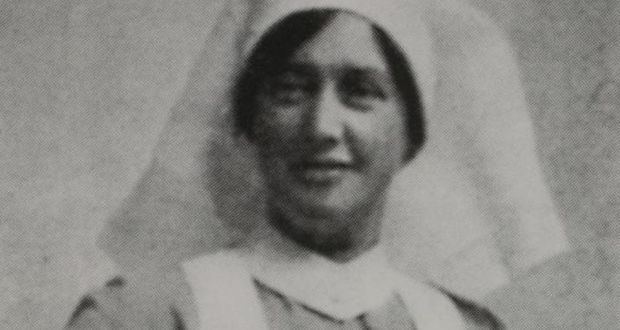 | ||
Known for The delivery of the Surrender Died 25 June 1957, Bray, Republic of Ireland | ||
The elizabeth o farrell story
Elizabeth O'Farrell (Irish: Éilís Ní Fhearghail; 5 November 1884 – 25 June 1957) was an Irish nurse and member of Cumann na mBan, best known for delivering the surrender in the Easter Rising of 1916.
Contents
- The elizabeth o farrell story
- Early life
- The Rising
- Airbrushed from history
- Aftermath
- Life after The Rising
- Commemorations
- References
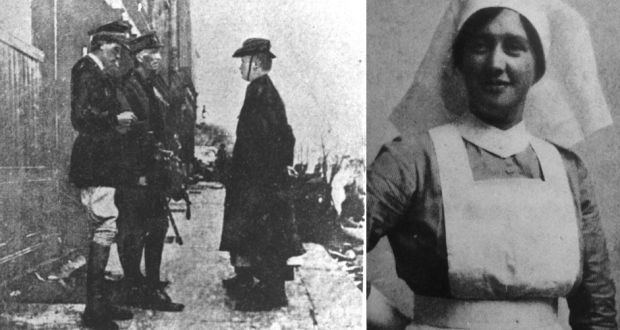
Early life

Elizabeth O’Farrell was born on the 5th of November 1884 in City Quay Dublin, she was the daughter of Christopher O'Farrell a dock labourer and Margaret Kenneah a housekeeper. She was educated by the sisters of mercy. Her father died when she was young and she was sent to work. She took a job in Armstrong's, a printers in Amiens Street. She was a member of the Sacred Heart and Total Abstinence sodalities. After education she became a midwife and joined the national maternity hospital Holles street. She was a part of the Gaelic League and became fluent in Irish. In 1906 she joined Inghinidhe na hÉireann alongside lifelong friend Julia Grenan . She also then joined Cumnan na mBan the women's branch of the Irish volunteers after its establishment in 1914.
The Rising
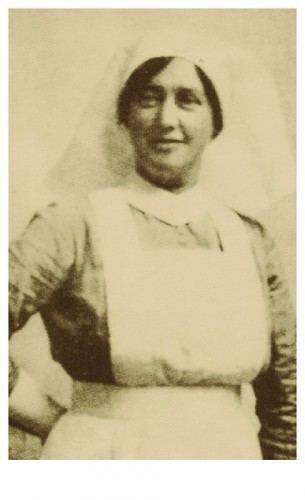
O'Farrell acted as a dispatcher before and during the Rising, delivering bulletins and instructions to the rebel outposts around Dublin. She was one of three women, including Winifred Carney, who remained in the General Post Office, Dublin until the end of the Rising. Along with her lifelong friend and fellow nurse, Julia Grenan, she cared for the wounded including James Connolly. At 12.45 pm on Saturday 29 April, O'Farrell was handed a Red Cross insignia and a white flag and asked to deliver the surrender to the British military. She emerged into heavy fire on Moore Street which abated when her white flag was recognised.
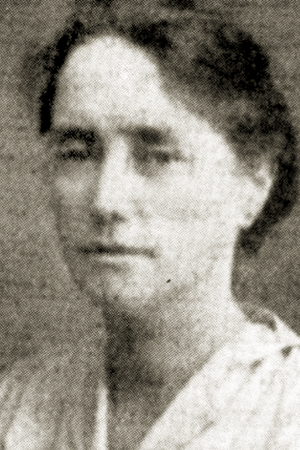
O'Farrell was taken to Brigadier General William Lowe who sent her back to Patrick Pearse at number 16 Moore Street with a demand for unconditional surrender. Pearse agreed and, accompanied by O'Farrell, surrendered in person to General Lowe. Though partly obscured by Pearse, she may be seen in a press photograph taken at the moment of the surrender. The apparent removal of her figure in many subsequent versions of the photograph has given rise to much speculation.
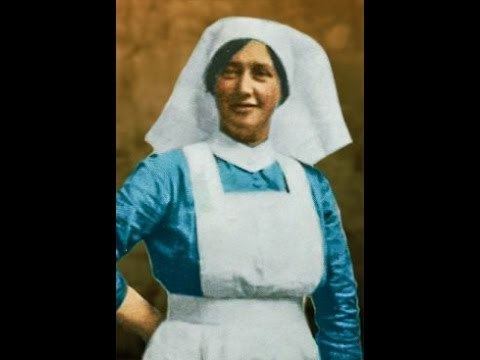
Accompanied by a priest and three soldiers she brought the order to surrender to the insurgent positions throughout the city.

During the 1916 rising, Elizabeth O'Farrell was sent to Athenry to deliver a despatch on Easter Monday. She reported with her friend Julia Grenan at the GPO on her return. They were sent around the bullet-torn streets of Dublin during the week with despatches, food and ammunition hidden in their long skirts to stations at Boland's Mill, Powers' Distillery, Jacobs' Factory, St. Stephen's Green and the Four Courts. Women and wounded were evacuated from the GPO on the Friday of Easter Week but Elizabeth O'Farrell, Julia Grenan and Winifred Carney stayed behind with the remainder of the troops which retreated to a nearby house in Moore St. On Saturday, Pearse chose Elizabeth O'Farrell to deliver the surrender notice to Brigadier-General Lowe. She walked out through the crossfire while waving a white handkerchief and walked towards the British barricade. She was taken to meet Lowe in Parnell Street, brought a message back to Pearse and later visited the commanders stationed at different locations under British Army escort with the signed orders of surrender from Pearse. She was arrested by an accident and sent to Kilmainham Jail but she soon was released. When Elizabeth did deliver message of surrender to the British soldiers she was still not treated well. Although she was a ‘guest’ there were still some bad blood held against the Irish by British soldiers. She was strip searched when she was supposed to be a ‘guest’ and she also had money stolen from her coat by a British officer. General Lowe later apologised to Elizabeth and her money was returned. In Elizabeth O’Farrell’s personal account of what happened during the rising she remarks that General Lowe was most courteous despite how other British soldiers may have treated her. Elizabeth O’Farrell showed bravery and courage when delivering the message of surrender to the British army and is recognised as an important woman in Irish history.
Airbrushed from history
O'Farrell acted as a messenger between Patrick Pearse and General Lowe during the surrender. She left the GPO carrying a white flag for protection. Once she had delivered the message, she was directed to bring Pearse to General Lowe and to unconditionally surrender.
One of the most well-known images from the 1916 Rising is the surrender of Pearse facing General Lowe on Saturday, 29 April 1916 . Just before the photograph was taken, O'Farrell stepped back. In the original photograph, O'Farrell's feet are visible next to Pearse. Over years of publishing, the photograph has slightly changed. Today, despite O'Farrell's large role in this part of history, Elizabeth O'Farrell is often remembered for being forgotten as she has been removed from more recent editions of the photograph.
This photograph was published 10 days later after the surrender in the Daily Sketch Newspaper with the deletion of O'Farrell's feet. Although it is unclear as to why O'Farrell has been edited out of the picture at this time, later publications often used the original picture to remember her role in the surrender.
In 1996, Neil Jordan's Michael Collins also depicts a different story of the surrender with a male role delivering the surrender. O'Farrell was again omitted.
Aftermath
Under the orders of Padraig Pearse, O’Farrell agreed and volunteered to deliver the order of surrender to the Volunteer and Citizen Army units at the Four Courts, the College of Surgeons, Boland's mill and Jacob's factory. Under the instruction of General Lowe she headed down Moore Street where republican troops from the GPO had taken over. The surrender order was given alongside with a note on how to surrender. She was given General Lowes word that she would not be held as a prisoner after delivering these orders.
O’Farrell was then taken to the Dublin Castle hospital where she was stripped of her clothing and processions and stayed for one night. The following day she was taken to Ship Street barracks, she was informed was to be sent to Kilmainham jail and held as a prisoner. O’Farrell and some other prisoners were escorted to Richmond barracks it was then when O’Farrell noticed Fr. Columbus of Church Street who has accompanied her to the four courts on the evening of April 29. He told her he would let General Lowe know of her situation.
After being sent to Kilmainham jail she was later released. General Lowe sent a car for O’Farrell to be taken to Dublin castle where she was to meet him. General Lowe apologized for her detainment and provided her with a letter in case of any further trouble with the military. This finalized O’Farrell's involvement in relation to the surrender.
Life after The Rising
O'Farrell spent the rest of life working as a midwife and nurse in the National Maternity Hospital. Elizabeth died on June 25, 1957 while on holiday in Fatima House in Bray, Co. Wicklow and she is buried in the Glasnevin Cemetery next to Julia Grenan in the republican plot.
Commemorations
After her death, the Nurse Elizabeth O'Farrell Foundation was established in 1967 to help support nursing postgraduate studies. A memorial plaque was also unveiled in Holles Street Hospital where she trained as a midwife from 1920 to 1921. Every year, the hospital awards a student the 'Elizabeth O'Farrell' commemorative award which is a silver medal awarded to a student midwife who exceeds academically in their final exams for qualification as a midwife.
In 2003 another plaque was unveiled in City Quay park commemorating her. O'Farrell was born close by to this area. In 2012, what was originally the City Quay park, is now known as the Elizabeth O'Farrell Park on Sir John Rogersons Quay, Dublin.
In 2016, RTÉ aired a series giving insight into the Rising for its 100-year anniversary. The series Cláracha Gaeilge, Réabhlóid aired four episodes with the final one commemorating Nurse O'Farrell. Episode 4 - 'Famous and Invisible' tells the story of Elizabeth O'Farrell's role in the surrender and looks at how she was airbrushed out from the original image of the surrender. The episode looks at lesser known characters of 1916 including Elizabeth O'Farrell.
